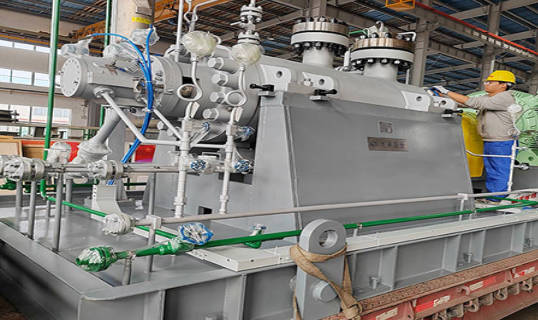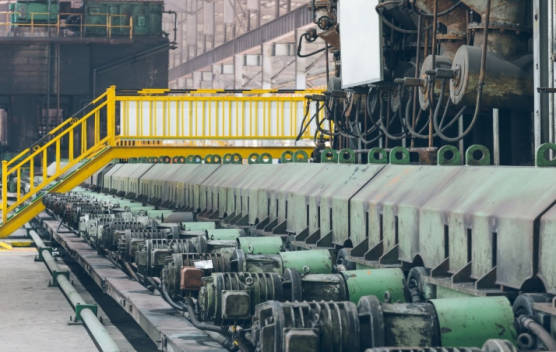
In the tough fields of the Chemical Industry, Petrochemical, and Coal Chemical handling, boosting working output often boils down to core tool picks. Among the top choices for liquid movement is picking the right centrifugal pump setup: single-stage or multistage. Experts need to grasp that “smarter, not harder” pumping involves choosing a pump made just for the needed system force (head) and amount (flow). This idea is what Longgang shows in its varied pump options.
The Critical Decision Point in Fluid Dynamics
Picking between a single-stage and a multistage centrifugal pump depends mainly on two linked factors: the needed flow speed and the pressure gap the pump has to create. A wrong match between the pump kind and the task outline leads to bad energy use, shorter part span, and more upkeep times.
Head vs. Flow: Defining the Pumping Challenge
A single-stage pump relies on just one impeller to give motion energy to the liquid. It works well for shifting big amounts of fluid. Yet, the top reachable head stays limited by the scale of this lone impeller and the engine speed. On the other hand, a multistage pump gets built especially for tasks needing a very raised head or force. In those cases, a single impeller just cannot supply the required boost.
Characteristics and Advantages of Single-Stage Pumps
Single-stage centrifugal pumps serve as the main tools of factory liquid shift. They shine in roles where a large amount of flow is required against average pushback.
High Flow, Low-to-Moderate Head Applications
Since single-stage pumps often have a bigger cover and impeller, they handle huge liquid volumes at fairly low-to-medium output forces. Workers prefer these pumps for loop tasks, basic shift duties, and operations where room limits are not key but the flow amount matters. Longgang makes many single-stage choices suited for hard chemical methods, such as the LZA(OH1) Single Stage Cantilever Centrifugal Pump and the LZE(OH2) Single Stage Cantilever Centrifugal Pump.
Design Simplicity and Maintenance Ease
A big plus of the single-stage build is its machine simplicity. Fewer shifting pieces mean less tangle, simpler takedown, and usually lower starting expenses. This straightforwardness turns straight into easier upkeep and faster Mean Time To Repair (MTTR). For roles needing upright setup or dipped running, single-stage setups are usual. You can see this in the Longgang LZV(OH3) Single Stage Vertical Pipeline Centrifugal Pump or the LBD(BB2) Radial Dissection Chemical Process Centrifugal Pump. The LBD(BB2) stands as a solid case of a chemical method pump crafted for output in normal chemical liquid shift.
The Engineering Necessity of Multistage Pumps
Multistage pumps are very focused devices built to tackle raised pressure gap needs that mark many current factory methods. These include those tied to CCUS and raised-force boiler setups.
Achieving Extreme High Pressure and Head Requirements
A multistage pump basically piles several impellers—or “stages”—on one rod. As the liquid leaves one impeller, it gets guided into the center of the next. There, its force builds step by step. This added force gain lets these pumps manage heads much beyond what single-stage units can reach. This skill is crucial in raised-force tasks, such as the raised-force self-balancing boiler water supply setup that Longgang provided in the Qingdao Refinery Liquefied Gas Safety Improvement project.
Multistage Configurations and Efficiency Gains

The built flexibility of multistage pumps lets them be shaped for exact force needs while keeping tuned output. Longgang’s raised-force options cover various multistage structures:
• LCD(BB3) Horizontal Split Multi-Stage Centrifugal Pump: A flat-split build that simplifies entry to inner pieces while giving multi-stage results.
• LDD(BB4) High-Pressure Segmented Multi-stage Centrifugal Pump: This divided build is designed strongly to manage severe forces in tough petrochemical tasks.
• LTD(BB5) Double Shell Multi-Stage Centrifugal Pump: This double-cover (or barrel) offers holding and build wholeness needed for very key, high-pressure, and high-temperature roles. For example, Longgang delivered a BB5-lined BB3 structure pump to move raised-heat hot oil for the Yulong Island Refining and Chemical Integration Project (Phase I).
One plain case of severe head ability is Longgang’s role in the Qilu Petrochemical – Shengli Oilfield Million Tons CCUS Project. There, the pump gave raised-force service with a size of 125m³/h at an 800m head. Such a need can only be met through a strong multistage build.
Longgang’s Engineered Portfolio: Matching the Pump to the Process
Longgang acts as a trusted provider to big players, including CNPC, Sinopec, and CNOOC. It focuses on giving proven and dependable centrifugal pump answers for large setups such as oil plants and ethylene facilities. Our know-how makes sure we pair the correct setup—single or multi-stage—to the needed liquid movement.
Single-Stage Solutions for Standard Chemical and Petrochemical Flow
When the task calls for a raised flow amount and average head, such as a basic loop or method shift, Longgang’s single-stage pumps bring dependability and output. The LBD(BB2) Radial Dissection Chemical Process Centrifugal Pump shows a dependable single-stage pump fit for a broad range of chemical method liquids. For focused setups, upright answers like the LY(VS4) Long Axis Submerged Centrifugal Pump give overhang running for dipped roles.

Multistage Heavy-Duty Pumps for Critical High-Head Services
For task-key roles where breakdown is not allowed and top force is required, Longgang draws on its forward multistage builds. The LTD(BB5) Double Shell Multi-Stage Centrifugal Pump is used for managing raised forces in complex methods, including the raised-heat hot oil loop. Plus, the LDD(BB4) High Pressure Segmented Multi-stage Centrifugal Pump proves vital for raised-force setups found in settings such as CCUS projects, coal change, and methanol making spots. By picking a focused multistage pump for a raised head, workers cut the chance of poor chain pumping using many single-stage pumps. In this way, they pump smarter, not harder.
Conclusion
Smart pump choice needs to go past plain flow figures and center on the key balance between flow and needed head. By picking efficient single-stage types like the LZA(OH1) for raised-amount, average-head roles, or raised-force multistage pumps like the LDD(BB4) and LTD(BB5) for severe head tasks, experts ensure the best system results and lasting span. Longgang stays devoted to supplying the base tools needed for dependable liquid movement across the petrochemical, chemical, and fertilizer fields.s
FAQ
Q: What is the main difference between a single-stage and a multistage pump?
A: A single-stage pump uses one impeller for high flow and moderate head, while a multistage pump uses multiple impellers stacked sequentially to achieve very high discharge pressure (head).
Q: Which Longgang pump type is typically used for extremely high-pressure industrial applications?
A: The LDD(BB4) High-Pressure Segmented Multi-stage Centrifugal Pump and the LTD(BB5) Double Shell Multi-Stage Centrifugal Pump are designed for severe high-pressure service.
Q: Why would an engineer choose a single-stage pump over a multistage pump?
A: Single-stage pumps, such as the Longgang LZA(OH1), are usually chosen when high volume flow is required but only low-to-moderate head is necessary, offering simpler maintenance and often lower capital cost.
Q: What are the primary industries Longgang serves?
A: Longgang provides centrifugal pump solutions primarily to the Chemical Industry, Petrochemical, Coal Chemical, Fertilizer, and CCUS sectors.









